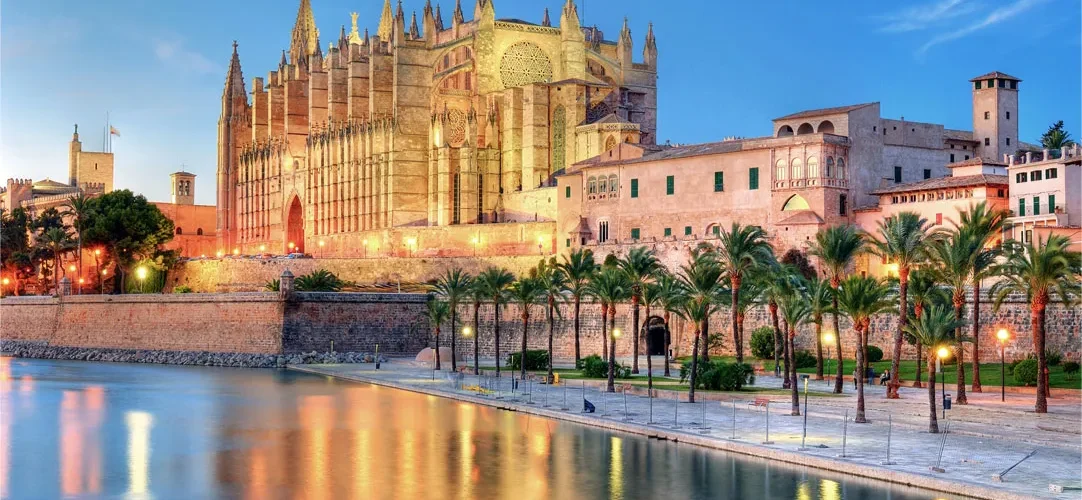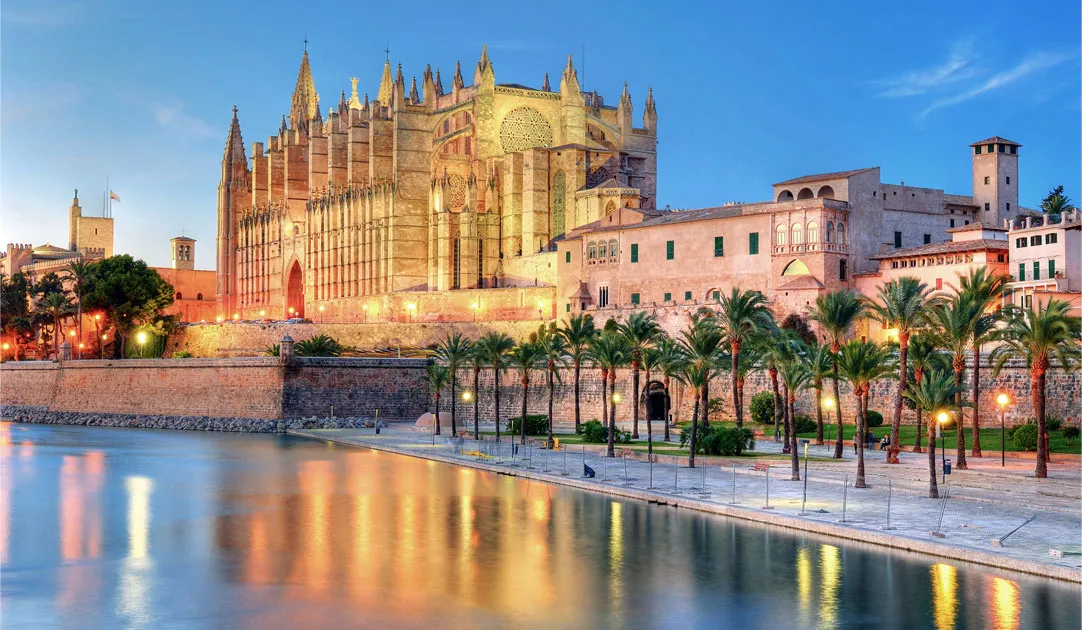
Introduction
Catedral-Basilica de Santa Maria de Mallorca is an imposing Gothic Roman Catholic cathedral and an emblem in the city’s capital. The cathedral overlooks the Parc de la Mar and the Mediterranean Sea, making it one of the best places for photos and views. Located in the heart of Palma, the cathedral is a popular destination for visitors, both for the views and the architecture. You can see an eclectic mix of Catalan Gothic style, European influences and other unique touches. The cathedral can accommodate up to 18,000 people, and thousands have visited each year. Plan to spend a few hours exploring the cathedral and surrounding grounds.
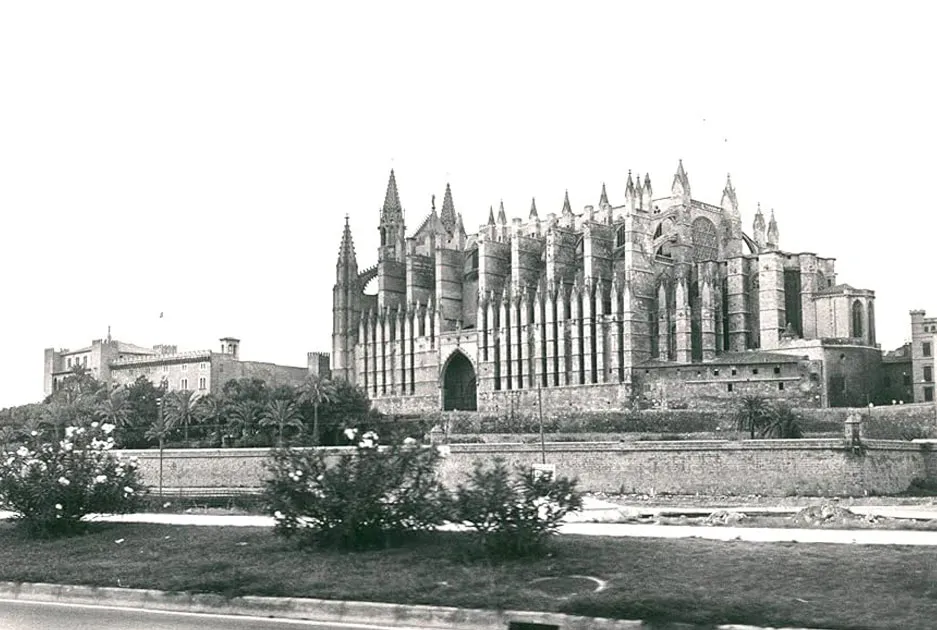
The Catedral-Basilica de Santa Maria de Mallorca is also known as La Seu and the Palma Cathedral. Constructed in the 14th century by the Crown of Aragon, the cathedral is located on the site of a Moorish-era mosque. The cathedral still boasts one of the tallest naves in the world, surpassing other famous cathedrals like Notre Dame in Paris. Some of the cathedral’s standout features include its Catalan Gothic styling, golden sandstone construction and 61 vibrant stained-glass windows, which give it the nickname ‘Cathedral of Light’. The central rose window is the highlight, through which sunlight washes the room in the morning.
Architecture of Catedral-Basílica de Santa María de Mallorca
Construction of the Cathedral of Mallorca started in the 13th century and ended in the 1630s. The Cathedral is in the Mediterranean Gothic tradition, but over the centuries, it has incorporated the cultural forms of the modern and contemporary periods. The history of the Cathedral is intimately linked to the local monarchy. After the conquest of Madina Mayurqa in 1229, James I, who was king of Aragon and count of Barcelona, ordered the consecration of the former great mosque to the Virgin Mary as a site for Christian worship and the building of a new church in the style of that time, using part of the site of the old mosque.
Built by the Crown of Aragón on the site of a Moorish-era mosque, the cathedral is 121 metres long, 40 metres wide and its nave is 44 metres tall. By way of comparison, the height of the central nave reaches 33m in Notre Dame de Paris, 38m in Reims, 42m in Notre-Dame d’Amiens and 48m in Saint-Pierre de Beauvais, the highest of all Gothic cathedrals. Designed in the Catalan Gothic style but with Northern European influences, it was begun by King James I of Aragon in 1229 but only finished in 1601. It sits within the old city of Palma atop the former citadel of the Roman city, between the Royal Palace of La Almudaina and the episcopal palace. It also overlooks the Parc de la Mar and the Mediterranean Sea.
In 1901, fifty years after a restoration of the cathedral had started, Antoni Gaudí was invited to take over the project. While some of his ideas were adopted – moving the choir stalls from the middle nave to be closer to the altar, as well as a large canopy – Gaudí abandoned his work in 1914 after an argument with the contractor. The planned changes were essentially cosmetic rather than structural, and the project was cancelled soon after.
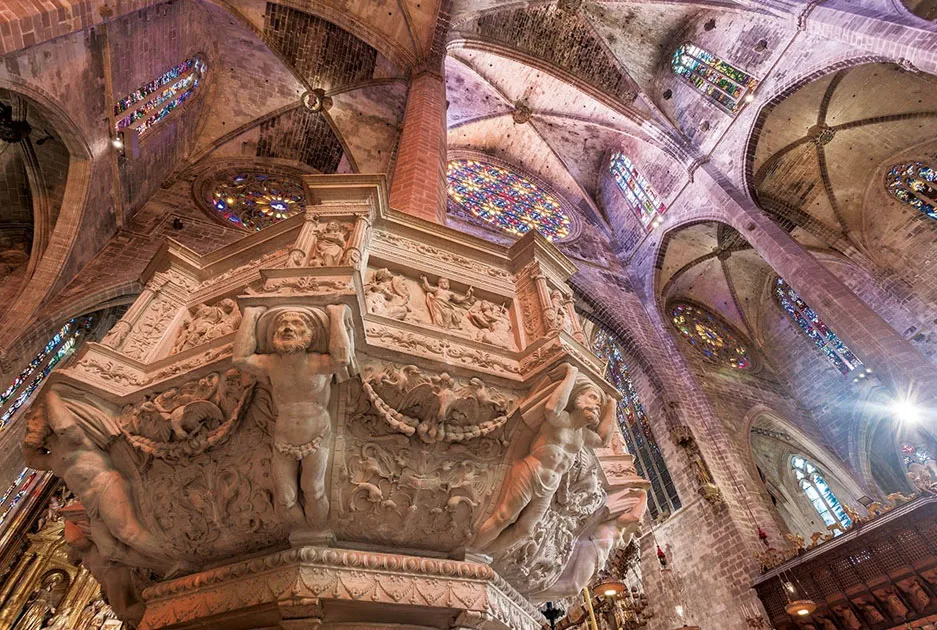
13th and 14th centuries
The first historical documents relating to the building of the Cathedral date from 1230. Bishop Pere de Morella consecrated the altar stone of the main altar. And during the reign of King James II (1276–1311), construction of the building we know today began.
Around the second half of the 13th century, new stonework started being laid in the chevet. This is integrated into the Royal Chapel and preserves the space intended for the tombs of the monarchs from the Mallorcan royal family. It is known as the Chapel of the Holy Trinity.
15th and 16th centuries
In 1498 work on the bell tower was completed. This contains nine bells, the largest of which is known as Eloi.
In the 15th century, the structural section corresponding to the Old Work of the Cathedral was completed, comprising the space as far as the two portals: the Mirador portal and the Almoina portal.
In the early-16th century construction began on the choir enclosure in the centre of the main nave.
In the 1570s, the decision was taken to complete the structure of the Cathedral with the stonework from the New Work, which involved building the last section comprising the last four sets of columns, the main façade and the main portal.
17th and 18th centuries
During the 17th and 18th centuries, the Baroque started to appear inside the Cathedral, in the form of altarpieces, paintings and sculptures marked by post-Tridentine spirituality.Notable among these are emblematic pieces like the Corpus Christi altarpiece, the cloister and the new chapterhouse.
19th century
As a result of the long-standing disrepair of the structural stonework, which was worsened by the earthquake of 1851, the ensemble of the main façade was at risk. The monumental restoration of the Cathedral, with a new main façade, was the work of the architect from Madrid Juan Bautista Peyronnet
20th and 21st centuries
At the start of the 20th century the architect Antoni Gaudí adapted the inner space of the Cathedral to meet the new liturgical and pastoral requirements. His intervention, promoted by the bishop, Pere Joan Campins, was carried out between 1904 and 1915. This liturgical restoration recovered space for the faithful and made visible the choir’s chancel, the bishop’s throne and the Chapel of the Holy Trinity.
The legacy of Gaudí’s work has continued throughout the 20th century with the process of opening-up the stained-glass windows and with the artistic updating at the service of the liturgy. The most recent contribution is the adaptation of the Chapel of the Blessed Sacrament by the Mallorcan painter Miquel Barceló in light of the Second Vatican Council.
About Catedral-Basilica de Santa Maria de Mallorca
Catedral-Basilica de Santa Maria is open to visitors for a small fee. When you visit, you begin at the Chapter Museum entrance, which takes you through the history of the cathedral and its construction. The cathedral has many amenities, including a gift shop, access for people with disabilities and audio guides. You’ll find plenty to see and do near the cathedral, including Parc de la Mar. This park not only gives you an excellent vantage point for the city’s architecture, but it features a large saltwater lake for activities. The park also has several cafes and an art gallery.
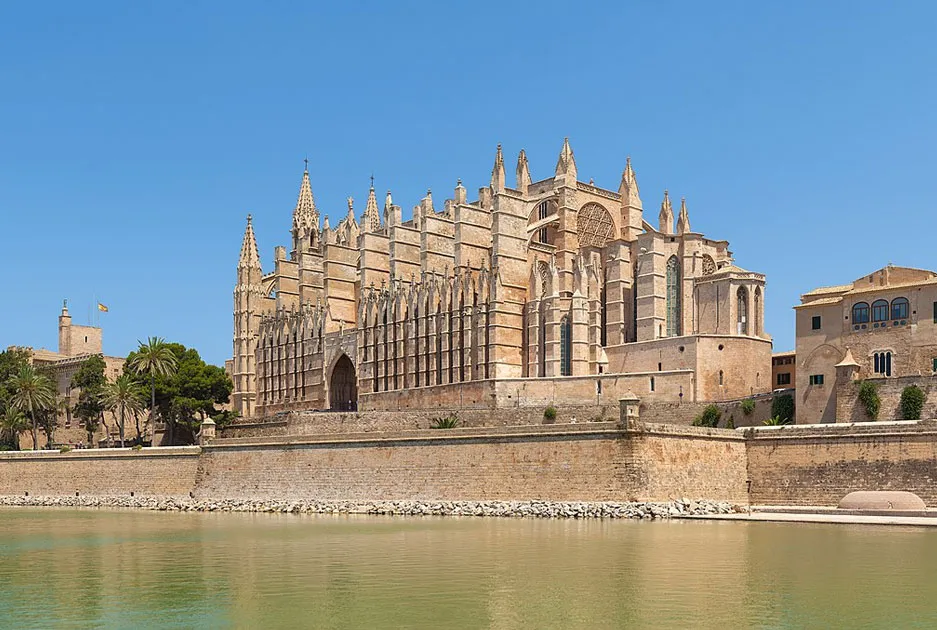
Annual Feast Day
Feast day: September 8th
The feast day of the Catedral-Basílica de Santa María de Mallorca, located in Palma, Spain, is celebrated on September 8th. This date marks the Nativity of the Blessed Virgin Mary, which is a significant feast day in the Catholic Church. The cathedral, also known simply as Palma Cathedral, is a stunning Gothic-style architectural marvel and a major landmark in Mallorca.
Mass Timing
Mass is held in the Cathedral of Mallorca from Monday to Friday at 9.00, Saturdays at 9.00 and 19.00, and on Sundays and holidays it has several schedules available: 9.55, 10.30, 12.00 and 19.00.
Contact Info
Catedral-Basílica de Santa María de Mallorca,
Plaça de la Seu,
s/n,
07001 Palma,
Illes Balears,
Spain
Phone No.
Phone:+34 971 71 31 33
Accommodations
Connectivities
Airway
Palma Mallorca Airport (PMI) to Palma Cathedral 27 minAverage Duration distance 10.2km
Railway
The nearest train station to Catedral-basilica De Santa Maria De Mallorca in Palma De Mallorca is Estació Intermodal. It’s a 27 min walk away.

